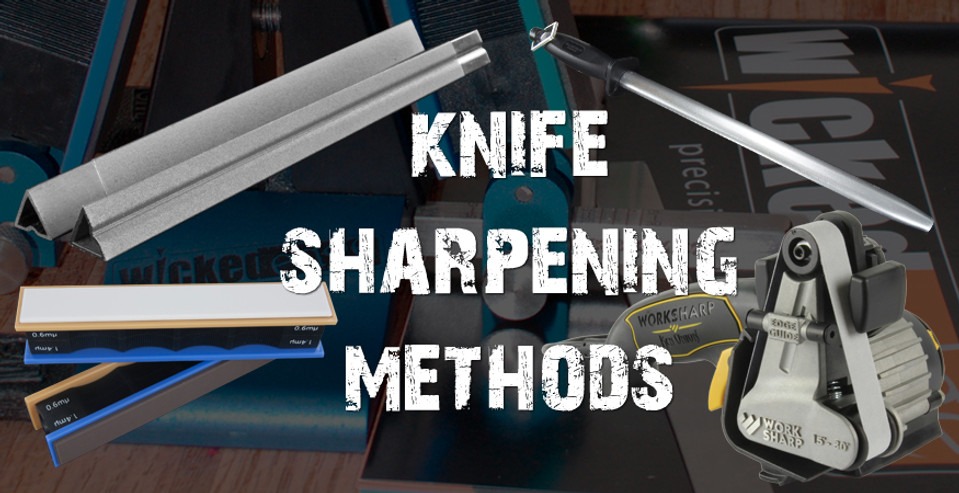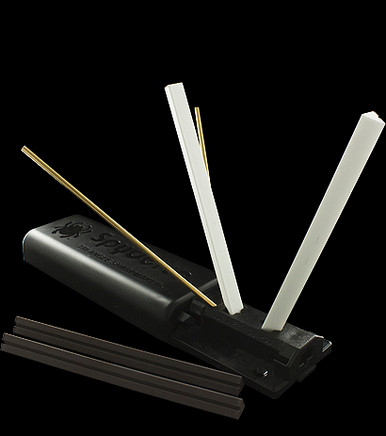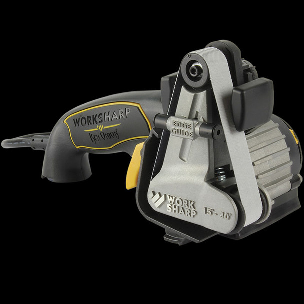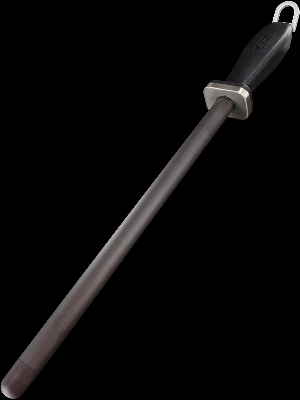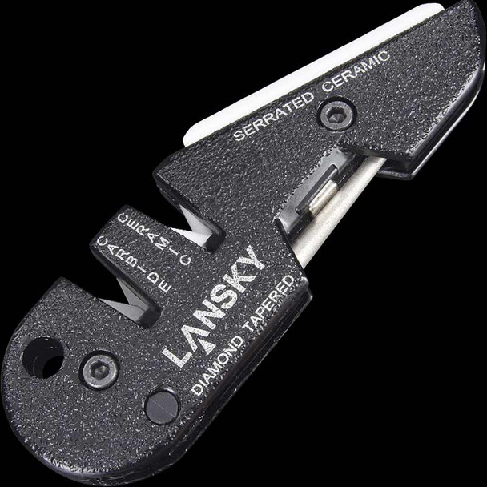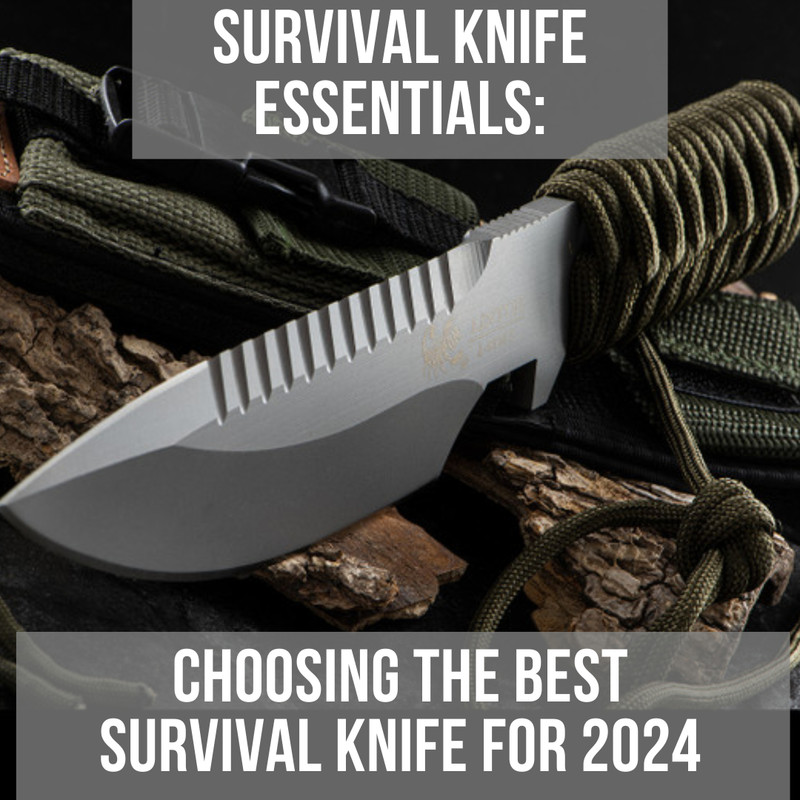Sharpening Basics: What are the different types of knife sharpener?
Posted by HH on 18th Aug 2015
We get asked all the time about knife sharpening, so we thought it was about time we started putting some of our knowledge out there for you to read at your own convenience. In this post we will take a quick look at the types of sharpeners out there and the methods of sharpening that they allow. Then over the coming weeks and months we will keep delving further into the world of knife sharpening, taking you right through from techniques and stone types to angles, re-grinding and answering any questions you have! So for now sit, back have a read and learn how to get that polished edge!
Crock Sticks
Crock Stick sharpeners are some of the most popular types of tools to aid in knife sharpening. However, it’s not as simple as just saying these are crock stick sharpeners as there are a number of slight variations. That being said they do all have features in common such as; they have a fixed base with fixed angles for the rods. The technique is also the same. The main differences come in the shapes on the rods themselves. To illustrate this we will look at the Spyderco Tri-Angle Sharpmaker and the Lansky Two-Stage Crock Stick Sharpeners. The Spyderco has as you can guess from the name triangular rods, whereas the Lansky has rounded rods. What’s the difference? Rounded rods are better suited to plain edge blades and the edges (not sides) of the triangular rods are designed to aid in the sharpening of serrated blades.
So you can sharpen plain on round rods and serrated or part serrated on triangular. You can also get rods which are multi-use and have both a curved edge and triangular edge, such as in the Smith’s 3-in-1 Sharpening System. These types of sharpeners are also really good for re-curve blades as with some of the other methods you will not be able to easily sharpen the entire blade.
Spyderco Sharpmaker
Bench Stones
Benchstones come in a number of different forms such as Oil Stones, Whetstones, Japanese Water Stones, Ceramic Stones and even Diamond Stones. Each has their own merits and drawbacks, however, for the purposes of this post we will look at bench stones in general and will follow up with focus posts on each of the different stones. Diamond Stones though are the most expensive of the lot. They are also the hardest of the stones too, and take off more material from the knife than the other stones. The final thing to note regarding bench stones are they really you will only want to sharpen plain edges with them. Why? Because otherwise you will not be able to get a full blade length sharpened without running the risk of damaging the knife. Serrated knives are also not advised to be used on bench stones.
Fallkniven Whetstones
Electric
If you want to quickly sharpen and knife and have access to electricity, then this method of sharpening may be for you. Electric sharpeners do the work so you don’t have to. They are pretty easy to set up and adjust, and then the tool does the hard work for you. We’ve found that these are one of the best sharpening methods for plain edged knives. We don’t advice using serrated edges with this method.
However, as you can guess from the name this isn’t a sharpening method you can use anywhere, you do need to have access to electricity. Due to the size of the tool too it’s not something that can be easily carried for just a quick sharpen. The final disadvantage is probably cost. There are a lot of cheaper alternatives. Very few are better though, so if you have the money and want to keep the sharpener near electricity. It’s well worth a look at. The best one we have here at Heinnie Haynes right now is the Work Sharp Ken Onion Edition.
Work Sharp Ken Onion Edition Sharpener
Honing Steels
Another tool you could use in your sharpening arsenal. These are primarily though designed for the honing of your knife edge. In layman’s terms this means slightly adjusting the edge of the blade so that it is once again straight as it originally should be. Honing steels are great because they are lightweight, cheap and transportable. But they don’t really re-sharpen the blade they just adjust the edge
You can get steels which are abrasive such as the Fallkniven D12 and C10 which are coated in diamond and ceramic which can be used to re-sharpen rather than hone a knife edge. These are really only used by chef’s though.
Fallkniven C10
Pull Through
The final method of sharpening is the pull through. When you want a very quick sharpen this is a method you’ll likely consider. Why? It’s really quick and easy to use, easily portable (pocket sized) and pretty cheap.
You’ll often see on sharpeners like the Lansky Blade Medic that there are two pull-through sections. One is a Carbide section which is designed for emergency situations where you need to get an edge back on the knife. The other section is usually a ceramic section which is designed for finishing off the edge so that it’s a lot neater and cleaner.
There are a few down-sides to this method though, mostly that the quality of edge given isn’t very good. That being said though, in an emergency situation, having a pocket sized sharpener can be better than nothing!
Lansky Blademedic
Take the work out of knife care with our superior knife sharpeners.




